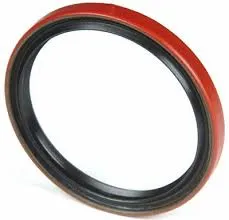7 月 . 27, 2024 17:35 Back to list
Exploring Current Market Trends and Prices for Oil Seals in Industrial Applications
Understanding Oil Seal Prices Factors and Market Trends
Oil seals, also known as lip seals or rotary seals, play a crucial role in various mechanical applications. They are designed to prevent the leakage of lubricants and to keep contaminants out of the machinery. The importance of oil seals cannot be overstated, as they are essential for the efficient operation of vehicles, industrial machinery, and consumer appliances. Understanding the pricing of oil seals is critical for manufacturers, suppliers, and customers alike.
Factors Influencing Oil Seal Prices
1. Material Composition Oil seals are made from various materials, including rubber, silicone, polyurethane, and metal. The choice of material greatly impacts the seal's performance and longevity. For instance, seals made from high-quality fluorocarbon elastomers are more expensive due to their superior resistance to chemicals and temperature extremes. As a result, the material's quality can significantly influence the overall price.
2. Size and Design Oil seals come in a wide range of sizes and designs to accommodate different applications. Custom sizes or specialized designs, such as those required for specific machinery or environmental conditions, typically command higher prices due to the additional manufacturing processes involved. Standard sizes may be more readily available and thus cheaper.
3. Manufacturing Process The production method used to create oil seals also affects their price. Seals manufactured using advanced techniques such as injection molding or precision machining tend to be more expensive due to the greater control over quality and tighter tolerances achieved in these processes. Bulk production can lower costs, which is beneficial for suppliers and consumers.
4. Market Demand and Supply The oil seal market is influenced by global economic conditions, manufacturing rates, and demand from various sectors, including automotive, aerospace, and industrial machinery. An increase in production across these sectors usually leads to higher demand for oil seals, which can elevate prices. Conversely, an economic downturn might decrease demand, leading to lower prices.
oil seal price

5. Brand Reputation Well-established brands with a reputation for high-quality products often charge a premium for their oil seals. Customers may be willing to pay more for the assurance of reliability and durability that comes with a trusted brand. In contrast, lesser-known manufacturers might offer lower prices to attract customers, but this can sometimes come at the expense of quality.
Market Trends
The oil seal market has been witnessing several trends that impact pricing. One notable trend is the growing emphasis on sustainability and environmental regulations. Manufacturers are increasingly producing eco-friendly oil seals made from recyclable materials, which can initially be more expensive to produce. However, as technology advances and production processes improve, costs may decrease, making these sustainable options more accessible to consumers.
Another trend is the rising cost of raw materials, driven by geopolitical factors and supply chain disruptions. These fluctuations can lead to volatility in oil seal prices. Manufacturers and suppliers will need to navigate these challenges and potentially pass on some of the costs to consumers.
Conclusion
In summary, oil seal prices are influenced by a variety of factors, including material composition, size, manufacturing processes, market dynamics, and brand reputation. As the demand for quality and specialized seals continues to grow, understanding these variables can help consumers make informed purchasing decisions. Keeping an eye on market trends and pricing fluctuations will be essential for anyone involved in the production or procurement of oil seals, ensuring they stay competitive in an ever-evolving landscape.